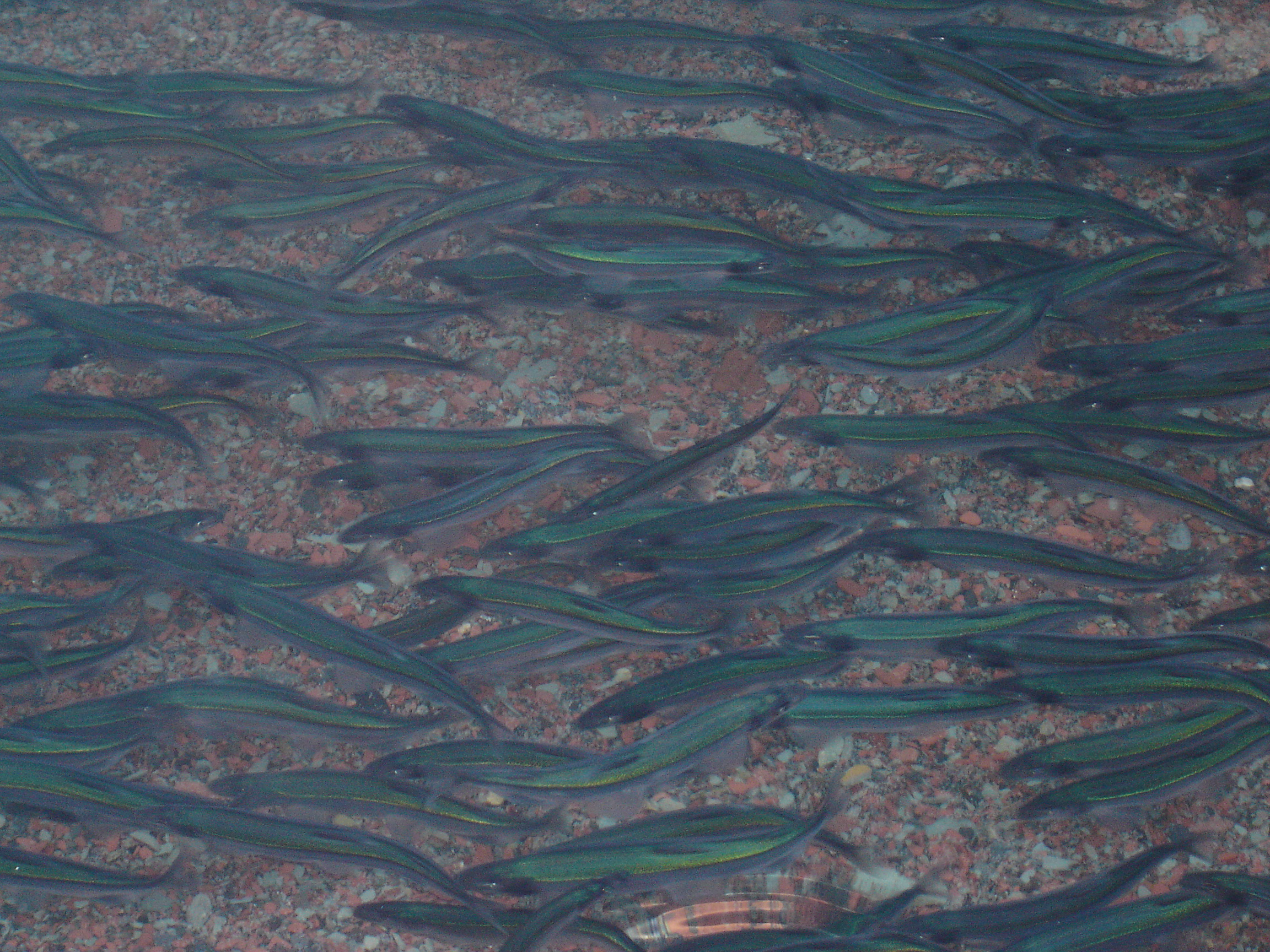WWF-Canada calls for halt of capelin fishery to protect species
Collapsed capelin stock needs a precautionary approach in Newfoundland and Labrador
St. John’s, N.L., March 9, 2021 – In response to the lack of recovery of collapsed capelin stocks, WWF-Canada is calling for a halt to the capelin fishery in Newfoundland and Labrador. This comes as Fisheries and Oceans Canada (DFO) begins its science assessment for the 2J3KL capelin stock, a process which will provide a scientific update to inform the development of management measures (such as total allowable catch) for the upcoming fishing season.

Capelin (Mallotus villosus) spawning on a beach in Petley, Newfoundland, Canada.
DFO’s spring acoustic survey for capelin could not be completed safely in time for this year’s assessment. However, the 2020 assessment estimated abundance at just four per cent of historic levels and projected the likelihood of further declines at 90 per cent.
According to studies by DFO scientists and local and Indigenous knowledge, capelin abundance plummeted precipitously 30 years ago and has never recovered.
Despite overwhelming evidence of a stock in critical condition, DFO’s precautionary approach framework has never been implemented. This means there are no formal limit reference points or pre-agreed upon harvest control rules for this crucial fish. Closing the fishery for now, until this precautionary approach can be applied, is an essential first step in allowing capelin populations to recover.
Sigrid Kuehnemund, VP wildlife and industry, WWF-Canada says:
“There is no question. We are fishing a collapsed resource. In addition to the overwhelming scientific reports, coastal communities are reporting less or no capelin spawning on the beaches as well as a lack of capelin in the bellies of fish like char, salmon, and cod. By failing to protect these forage fish, we are failing to prioritize the health of the ecosystem, which will have long-term impacts on the biodiversity and economic opportunities of the region.”
Factors indicating capelin under continuing threat:
Science presented at the 2020 capelin assessment indicated that risk of fishery impacts on stock status was heightened, given how low the stock was. Indicators of stock health included:
- Capelin are spawning later in the season, resulting in less survival; capelin larval numbers have been poor for at least six years (2014-2019).
- Capelin are maturing at younger ages while older capelin (ages 4–6) are disappearing from the fishery.
- Capelin distribution has protracted to the south, leaving less capelin for species off Labrador such as char, turbot, and cod.
- The latest stock assessment for Northern cod shows that capelin (their primary source of food) has disappeared from cod diets.
- Cod are starving, worsening their body condition in recent years.
- DFO is now finding worrisome levels of cod cannibalism (eating their own young), which has also been a growing observation and concern for coastal Labrador.
- Recent levels of capelin consumption by fish predators, capelin distribution, growth rates, and maturation rates are consistent with patterns of low capelin abundance.
Low capelin abundance has impacts beyond the fishery
Lack of capelin negatively impacts coastal communities across the province, not only through low availability, but also bottom-up effects on larger predators, like Atlantic salmon, Atlantic cod, and Arctic char. Many coastal communities, including those in NunatuKavut and Nunatsiavut, Labrador, have expressed concerns about capelin abundance and some have also called for a closure to the commercial capelin fishery to protect local food security.
About capelin
- Capelin is a keystone species, playing an important role in the marine ecosystem as a food source for predators such as northern cod, whales, and seabirds.
- Capelin population health depends on temperature, nutrients, and plankton, and capelin numbers can fluctuate greatly in in the face of environmental changes.
- People living along the coasts of Quebec and Newfoundland and Labrador can identify capelin spawning habitat and contribute to the conservation of this species by reporting sightings of capelin rolling to ecapelin.ca.
The initial assessment for Divisions 2J3KL capelin will take place March 9–12th. Results will be discussed at stakeholder advisory meetings, which will make recommendations to the Minister of Fisheries. A decision will be made for the summer 2021 fisheries in 2J3KL and 3Ps by June 2021.
About World Wildlife Fund Canada
WWF-Canada creates solutions to the environmental challenges that matter most for Canadians. We work in places that are unique and ecologically important, so that nature, wildlife and people thrive together. Because we are all wildlife. For more information, visit wwf.ca.
For further information
Rebecca Spring, Senior manager, communications, WWF-Canada, [email protected] +1-647-338-6274

